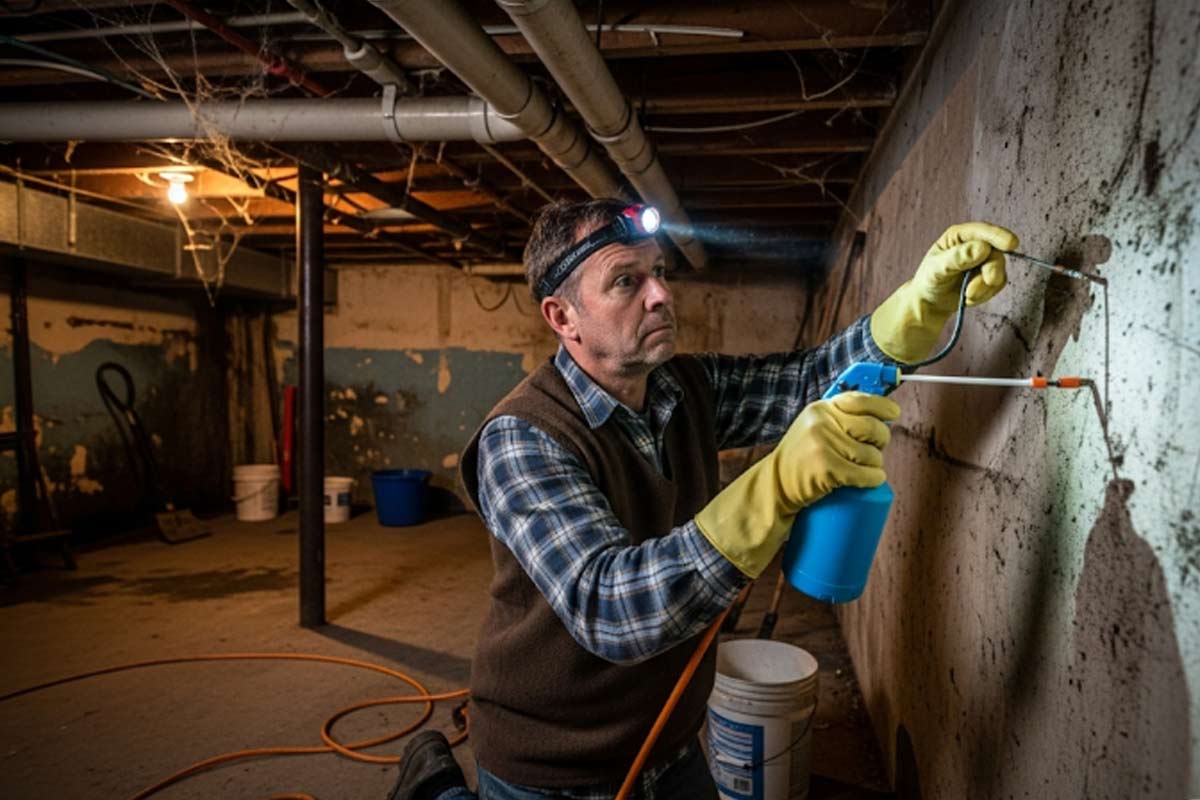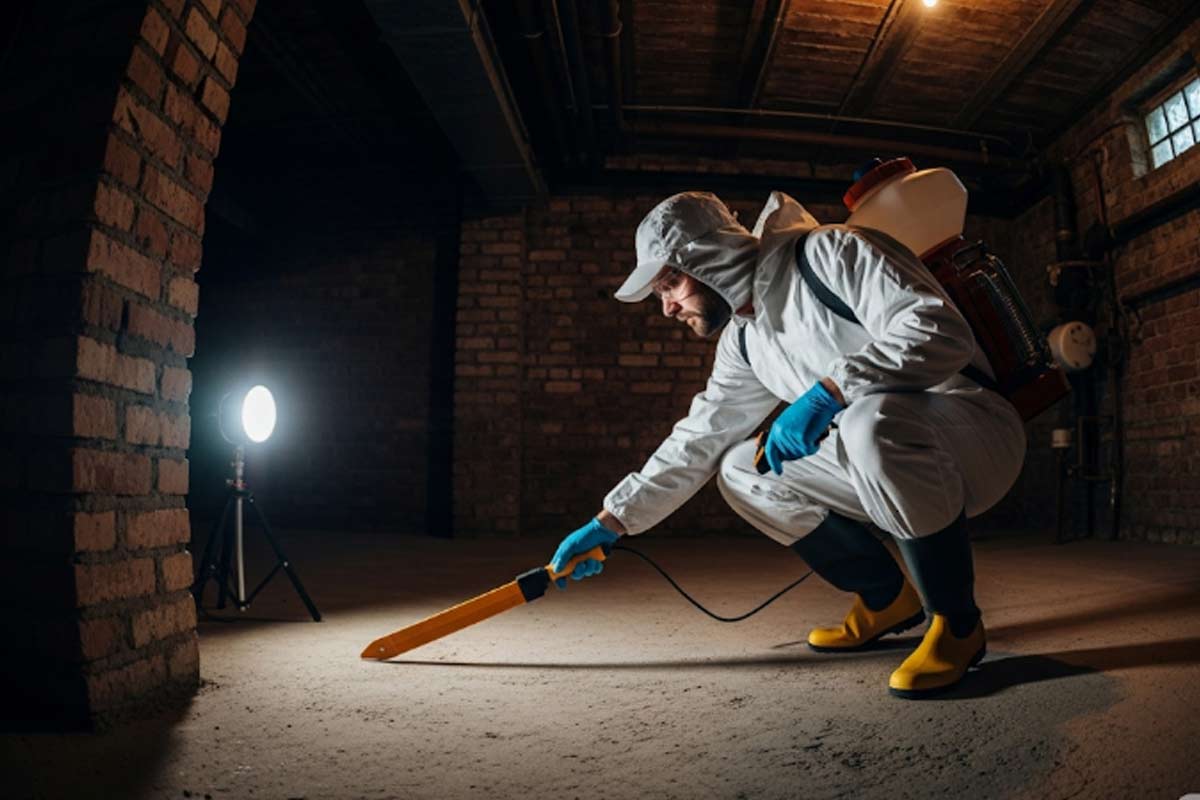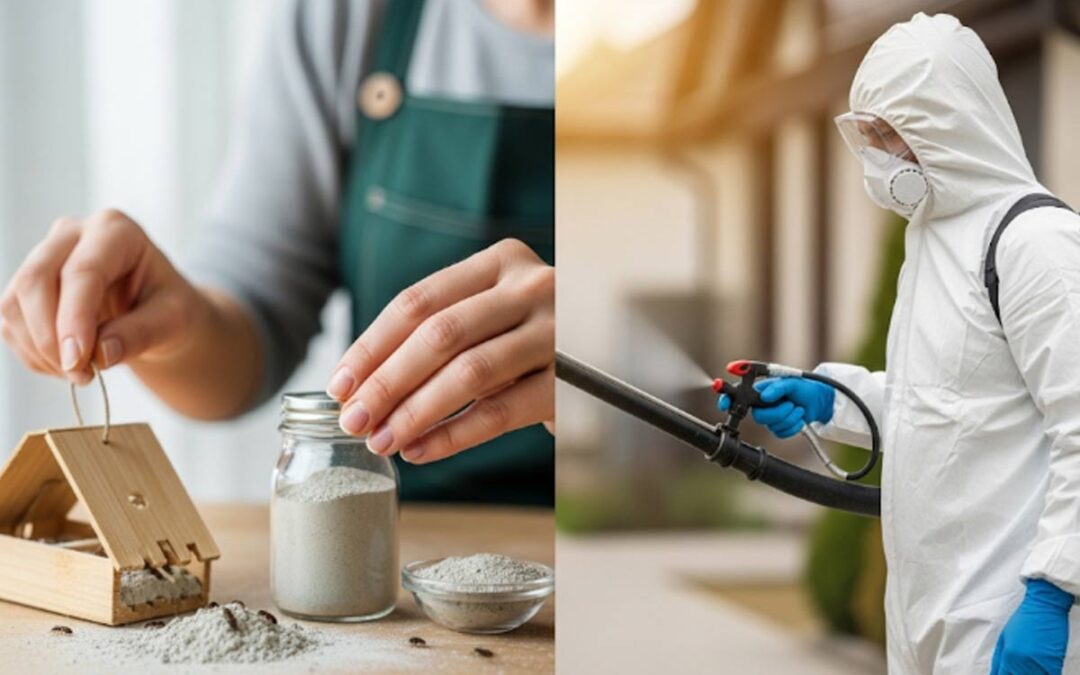A sudden scurrying sound from below, the distinct, unwelcome scent of mildew and dampness, or the unsettling sight of an insect darting into shadow can transform a comfortable home into a source of unease. Basements often provide an ideal harbourage for various unwelcome occupants. Their inherent characteristics—darkness, coolness, and undisturbed conditions—make them prime locations for pests seeking shelter, food, or moisture.
Homeowners frequently face a dilemma when confronted with these subterranean invaders. The immediate question arises: can this problem be managed independently, or is the skill of a professional necessary? Let’s examine the advantages and disadvantages of addressing basement pests with a do-it-yourself approach compared to engaging professional extermination services. Here are a few key considerations for making this crucial decision and offers advice on preventive measures to keep these areas free from unwanted guests.
The DIY Approach: Pros & Cons
Pros of DIY
- Cost Savings: Handling pest problems yourself can significantly reduce expenses. Purchasing over-the-counter sprays, traps, or baits is generally less costly than hiring a professional. This approach is especially attractive for small, isolated infestations.
- Immediate Action: When you spot a pest, you can respond instantly. There is no waiting for an exterminator’s appointment. This promptness can prevent a minor issue from escalating quickly, particularly with fast-reproducing pests like certain insects.
- Control Over Products: You choose the specific products used in your home. This allows for selection of less toxic options if environmental concerns are a priority. Homeowners can research ingredients and methods, ensuring comfort with what is applied.
- Convenience: Implementing DIY pest solutions often fits into your personal schedule. You can apply treatments at your leisure, without coordinating with an external service provider. This flexibility suits busy lifestyles.
- Education and Awareness: Attempting to solve pest issues can provide valuable knowledge about common household pests, their habits, and prevention strategies. This increased understanding can contribute to better long-term home maintenance and fewer future problems.
- Privacy: Some individuals prefer to keep pest problems private. A do-it-yourself approach avoids the presence of outside contractors, maintaining discretion about what is occurring within the home.
- Addressing Minor Issues: For isolated instances of common basement bugs like a solitary spider or a few silverfish, DIY methods are often entirely sufficient. These small-scale problems typically do not warrant the expense of a professional service.
Cons of DIY
- Limited Efficacy: Many over-the-counter products are not as potent as professional-grade treatments. They might only address surface issues, leaving the core infestation intact. This often results in recurring problems and frustration for the homeowner.
- Misidentification of Pests: Proper identification is crucial for effective pest management. Without expert knowledge, homeowners might misidentify a pest, leading to the use of inappropriate and ineffective treatments. Different pests require specific approaches.
- Safety Risks: Incorrect application of pesticides can pose health risks to residents and pets. Chemical exposure can lead to respiratory problems, skin irritation, or more severe health issues. Proper safety gear and ventilation are often overlooked.
- Wasted Time and Money: Investing in multiple DIY products and spending hours on application can be wasteful if the problem persists. The cumulative cost of ineffective treatments can sometimes exceed the price of professional help.
- Resistance Development: Repeated, improper use of pesticides can lead to pests developing resistance to certain chemicals. This makes future treatment, even by professionals, more challenging and less effective.
- Failure to Address Root Cause: DIY methods often focus on eliminating visible pests rather than addressing the underlying attractants or entry points. Moisture issues, cracks in foundations, or food sources may remain, allowing infestations to return.
- Incomplete Eradication: Without professional training and equipment, achieving complete eradication of a pest population is difficult. Colonies hidden within walls or difficult-to-reach areas often go untreated, ensuring their continued presence.
Common DIY Basement Pests and Solutions

Certain basement creatures are frequently encountered by homeowners and often prompt initial DIY attempts. Understanding these pests and their common remedies is important for any homeowner.
- Silverfish: These small, wingless insects thrive in damp, dark environments, feeding on starches. DIY solutions include dehumidifiers to reduce moisture, sealing cracks, and using sticky traps or boric acid in affected areas.
- Spiders: Basements are prime spider habitats due to their ample food sources (other insects) and undisturbed nature. Regular vacuuming, sealing entry points, and removing clutter can help. Insecticidal sprays can be used for direct contact.
- Centipedes and Millipedes: These multi-legged arthropods are drawn to moisture. Reducing humidity, removing leaf litter or debris near the foundation, and sealing cracks are effective. Sticky traps can also capture them.
- Earwigs: Attracted to damp, decaying organic matter, earwigs are common in moist basements. Eliminating moisture sources, removing garden debris, and setting out traps (like rolled-up newspapers) can help control them.
- Pill Bugs and Sow Bugs: These crustaceans prefer damp environments and feed on decaying plant material. Improving ventilation, reducing humidity, and sealing foundation cracks will help keep them out of the basement.
- Camel Crickets: Known for their jumping ability, these crickets favour cool, damp, dark places. Reducing moisture, sealing openings, and setting sticky traps or bait stations can mitigate their presence.
- Mice: These rodents seek shelter and food. Setting snap traps or bait stations, sealing entry points as small as a dime, and keeping food stored securely are standard DIY measures for rodent control.
When to Call a Professional Exterminator
Indicators of a Serious Infestation
Knowing when a basement pest problem has escalated beyond DIY capabilities is critical. Certain signs suggest a professional intervention is necessary.
- Persistent Pest Sightings: If you continuously see pests despite your best efforts, it indicates a larger, more entrenched population. Sporadic sightings might be manageable, but constant encounters suggest a widespread issue.
- Evidence of Damage: Chewed wires, gnawed wood, soiled insulation, or damaged fabrics are clear signs of an active and destructive infestation. Rodents, in particular, can cause significant structural harm.
- Multiple Pest Species: Finding several different types of pests in your basement suggests a complex ecosystem. Addressing multiple species with varied behaviours requires a comprehensive strategy often beyond DIY scope.
- Presence of Nests or Colonies: Discovering nests (e.g., rodent nests, ant hills, large spider webs with egg sacs) means a breeding population is established. This indicates a deeply rooted problem requiring professional eradication.
- Unusual Odours: A strong, musky, or foul odour can signal a large pest presence, especially from rodents or certain insects. These smells often indicate urine, faeces, or decaying bodies within hidden areas.
Benefits of Professional Extermination

Engaging a professional exterminator offers numerous advantages, ensuring effective and long-lasting solutions to pest problems. Their expertise and resources provide comprehensive coverage.
- Expert Knowledge and Identification: Professionals possess the training to accurately identify pests, understand their life cycles, and know their behaviour patterns. This allows for targeted and effective treatment plans, avoiding guesswork.
- Effective Treatment Methods: Exterminators have access to professional-grade products and equipment not available to the public. These substances are more potent and applied using precise techniques, ensuring thorough eradication.
- Long-Term Solutions: A professional doesn’t just eliminate visible pests. They also identify and address the root causes of an infestation, such as moisture problems, entry points, or harbourage areas, preventing future occurrences.
- Safety and Compliance: Licensed professionals are trained in the safe handling and application of pesticides, minimizing risks to residents, pets, and the environment. They adhere to industry regulations and safety protocols.
- Time and Convenience: Hiring a professional frees up your time and effort. They handle the entire process, from inspection to treatment and follow-up, providing a hassle-free experience for the homeowner.
- Guaranteed Results: Many pest control companies offer guarantees for their services. If pests return within a specified period, they will often re-treat at no additional cost, providing peace of mind and accountability.
- Prevention Strategies: Beyond immediate eradication, professionals offer valuable advice on preventing future infestations. This includes recommendations for home repairs, sanitation practices, and environmental modifications to deter pests.
Specific Cases Requiring a Pro
Certain pest situations almost universally demand the expertise of a professional exterminator. These scenarios involve significant risks or require specialized knowledge.
- Termite Infestations: Termites can cause extensive structural damage to a home, often undetected until significant harm has occurred. Their presence requires specialized treatment and monitoring by a pest control expert.
- Bed Bugs: These notoriously difficult pests hide well and are highly resistant to many DIY treatments. Eradicating bed bugs requires specific methods, often involving heat treatments or targeted chemical applications by professionals.
- Wildlife Intrusions: Raccoons, squirrels, bats, or other wildlife in the basement can cause significant damage and pose health risks. Their removal often requires humane trapping and exclusion methods best handled by trained professionals.
- Large or Widespread Infestations: If pests are present throughout the basement or have spread to other areas of the house, a professional intervention is essential. Large infestations require a coordinated and comprehensive approach.
- Health-Threatening Pests: Pests that transmit diseases (e.g., certain rodents, cockroaches) or pose allergic reactions (e.g., some spiders, cockroaches) warrant immediate professional attention to protect human health.
Deciding between a do-it-yourself approach and professional intervention for basement pests hinges on the scale of the problem, the specific pest involved, and your comfort level with handling chemicals. While DIY methods can be effective for minor, isolated issues, serious or recurring infestations typically require the experience and resources of a certified exterminator. The initial cost savings of DIY can quickly be negated by wasted time, ineffective treatments, and potentially worsening conditions if the problem is not addressed correctly.
For comprehensive and lasting relief from basement pests, especially for challenging invaders like termites, bed bugs, or large rodent populations, professional pest removal in Orillia offers the most reliable solution. For effective pest removal in Orillia, and surrounding areas, consider contacting Mr. Pest Control. We have various locations: (705) 739-7378 (PEST) [Barrie], (705) 326-3377 [Orillia], (705) 739-7378 [Simcoe County], (705) 739-7378 [Midland & Area]. Prioritizing a healthy and safe living environment means making informed choices about pest management.



